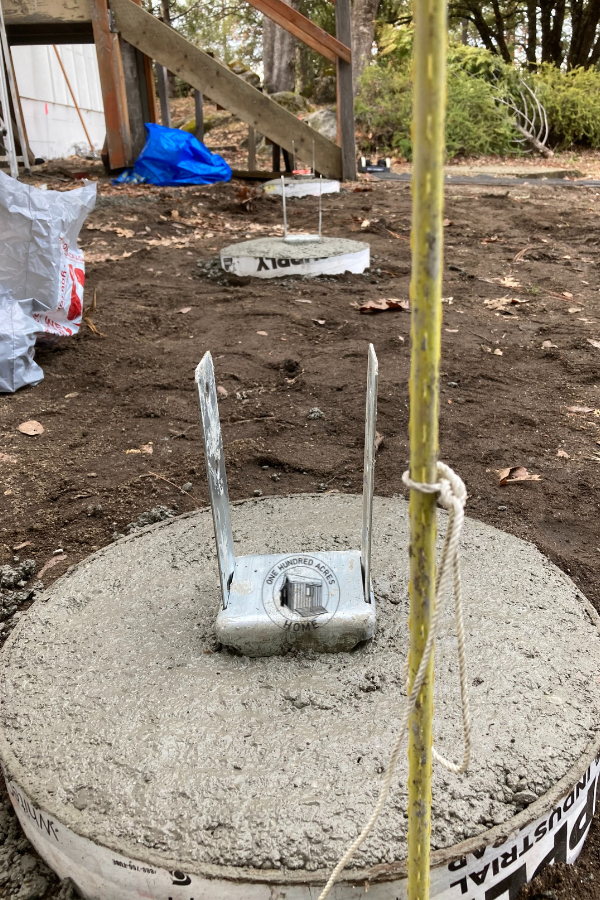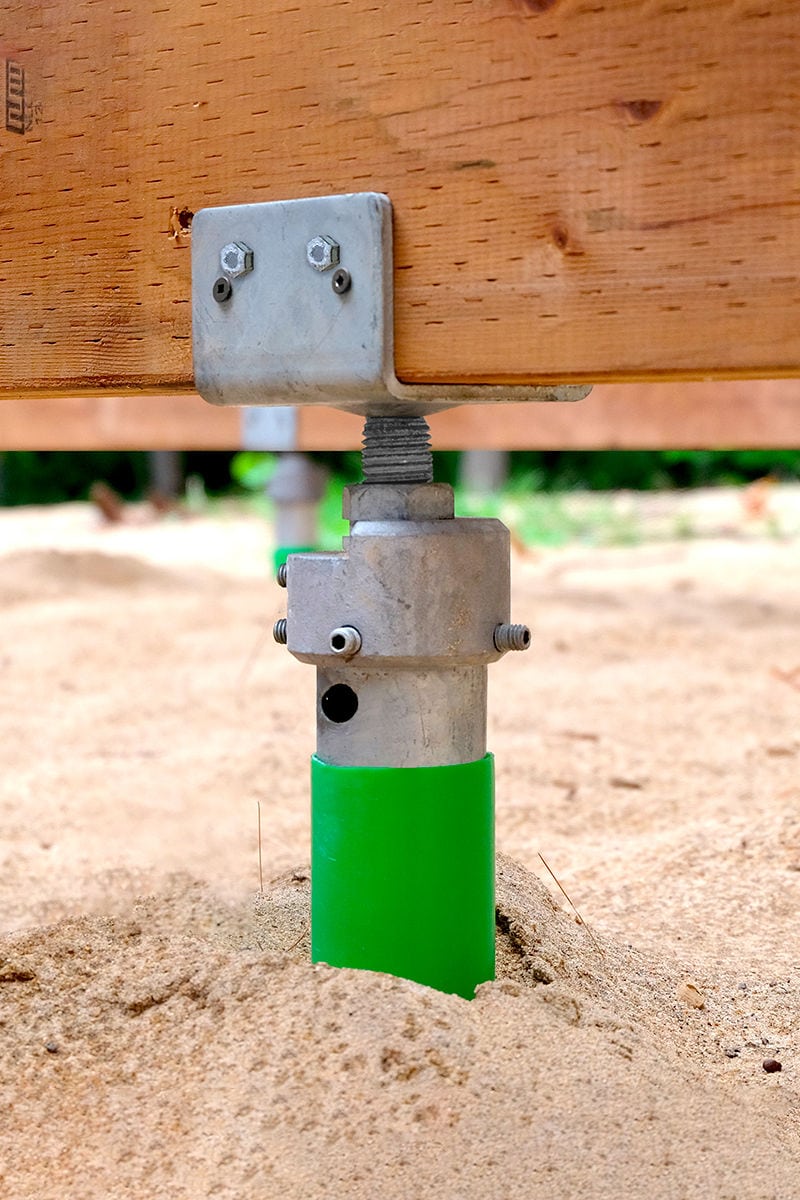Deck Footings 101: Navigating the Fundamentals for a Steady and Resilient Deck
Deck Footings 101: Navigating the Fundamentals for a Steady and Resilient Deck
Blog Article
Specialist Tips for Putting Up Deck Footings to Support Your Outdoor Room
When it comes to developing a deck, one of the most important elements to think about is the installation of proper footings. These grounds are the foundation upon which your outdoor room will rest, giving security and assistance for years to come. What precisely does it take to set up deck footings correctly?
Significance of Appropriate Deck Grounds
Proper deck grounds are important for making sure the security and longevity of your exterior room. When constructing a deck, it is crucial to take notice of the structure on which it will relax. Deck grounds supply the needed assistance for the entire structure and aid distribute the weight equally - Deck Footings. Without solid and effectively mounted grounds, your deck might become unpredictable, causing safety and security dangers and expensive repair services.

In addition to security, proper deck footings additionally add to the durability of your outdoor space (Deck Footings). Grounds that are created and built to withstand the aspects and soil conditions in your area will certainly assist protect against the deck from moving or clearing up with time. By ensuring the grounds are effectively sized and set up, you can minimize the threat of damages to the deck structure, extending its life expectancy and minimizing the need for pricey fixings or replacements

Choosing the Right Kind of Grounds
When choosing the proper sort of grounds for your deck, it is vital to consider factors such as dirt conditions, local building regulations, and the overall style of your outside space. The kind of footing you pick will certainly play a crucial function in making sure the stability and longevity of your deck.
One usual kind of ground is the concrete ground. Concrete footings are appropriate for a lot of soil problems and offer outstanding support for decks.
Sometimes, you may require to make use of specific grounds, such as heap grounds or deep foundations, if you are building a multi-level or huge deck. These grounds are created to disperse the weight of the deck over a larger location, making certain stability and stopping sinking or settling.
Prior to picking a kind of footing, it is vital to get in touch with neighborhood building ordinance and laws to make sure compliance. In addition, think about the layout and planned use of your outdoor area. Factors such as the size, form, and load-bearing requirements of your deck will certainly affect the type of footing that is most ideal.
Preparing the Ground for Footing Installation
To correctly prepare the ground for footing installment, it is essential to assess the dirt problems and take necessary actions to ensure stability and sturdiness of the deck. The very first action is to excavate the area where the footings will certainly be installed. The depth of the excavation will rely on the frost line in your area and the certain needs of the deck design. It is important to get rid of any type of vegetation, rocks, or debris from the excavation to guarantee a strong foundation.
As soon as the area has been dug deep into, the next action is to compact the soil. This can be done utilizing a plate compactor or by using a hand meddle. Compacting the dirt assists to go to website eliminate any type of voids or air pockets, which can lead to resolving and instability over time.
After condensing the soil, it is very important to lay a layer of crushed rock or crushed stone at the end of the excavation. This will certainly provide water drainage and assistance to prevent water from merging around the grounds, which can lead to disintegration and instability.
Step-by-Step Overview to Putting Up Deck Footings
After effectively preparing the ground for footing installment, the following step is to start the process of installing deck footings. This detailed guide will certainly supply you with a clear understanding of just how to mount deck grounds for your outside area.
Establish the location: Start by marking the positions of the deck footings utilizing stakes and string. Ensure that the locations align with the style and format of your deck.
Dig the openings: best site Make use of a blog post opening digger or an auger to dig the holes for the footings. The depth and size of the holes ought to be in accordance with neighborhood building regulations and the particular demands of your deck style.
Level the openings: Utilize a degree to make sure that the holes are dug to the proper depth and are degree with each various other. (Deck Footings)
Include gravel: Place a layer of crushed rock at the end of each hole to enhance drainage and prevent the timber from deteriorating.
Insert the grounds: Put the footings into the openings, ensuring they are level and plumb. Utilize a level and a determining tape to guarantee accuracy.
Protect the footings: Pour concrete right into the openings around the grounds, filling them to the top. Utilize a message degree to ensure the grounds remain level as the concrete sets.
Enable time for curing: Allow the concrete cure according to the supplier's guidelines before waging the deck building.
Common Blunders to Stay Clear Of During Footing Installation
One essential element to consider throughout the installment of deck grounds is avoiding typical mistakes that can jeopardize the security and longevity of your exterior room. While deck grounds might appear like a simple and basic part of the building and construction process, overlooking particular aspects can result in expensive repairs and potential safety and security risks down the line.

In addition, overlooking to install proper drain actions can cause water to collect around the footings, resulting in rot, decay, and the ultimate weakening of the deck's structure. Using the wrong kind of footing material or falling short to adequately protect the grounds can endanger their architectural honesty.
To stay clear of these mistakes, it is important to seek advice from a professional or comply with market standards to make sure appropriate footing installation. By doing so, you can make certain the security and longevity of your outside area, offering a satisfying and risk-free atmosphere for several years to find.
Conclusion
To conclude, setting up correct deck grounds is critical for the security and long life of your outside area. By selecting the ideal kind of footings and adequately preparing the ground, you can make sure a strong foundation for your deck. Following a detailed overview and avoiding common blunders throughout footing installment will certainly even more improve the sturdiness and safety and security of your deck.
Proper deck grounds are vital for ensuring the stability and durability of your outside room. The footings serve as a link in between the deck and the ground, allowing the weight of the deck and its residents to be spread evenly right into the soil.One common type of ground is the concrete ground. Place the grounds: Position the grounds into the openings, making certain they are level and plumb. Secure the footings: Pour concrete into the holes around the footings, filling them to the top.
Report this page